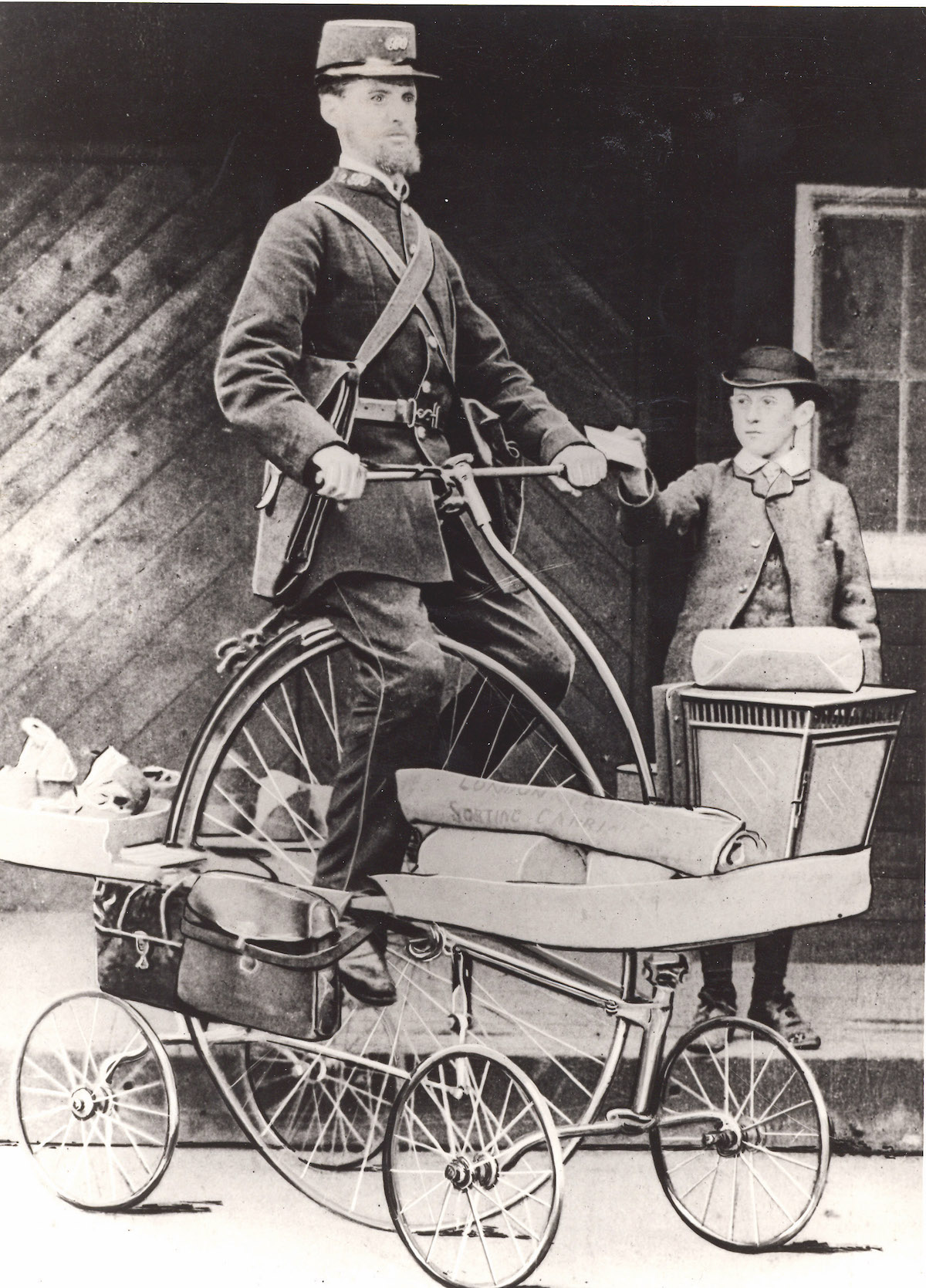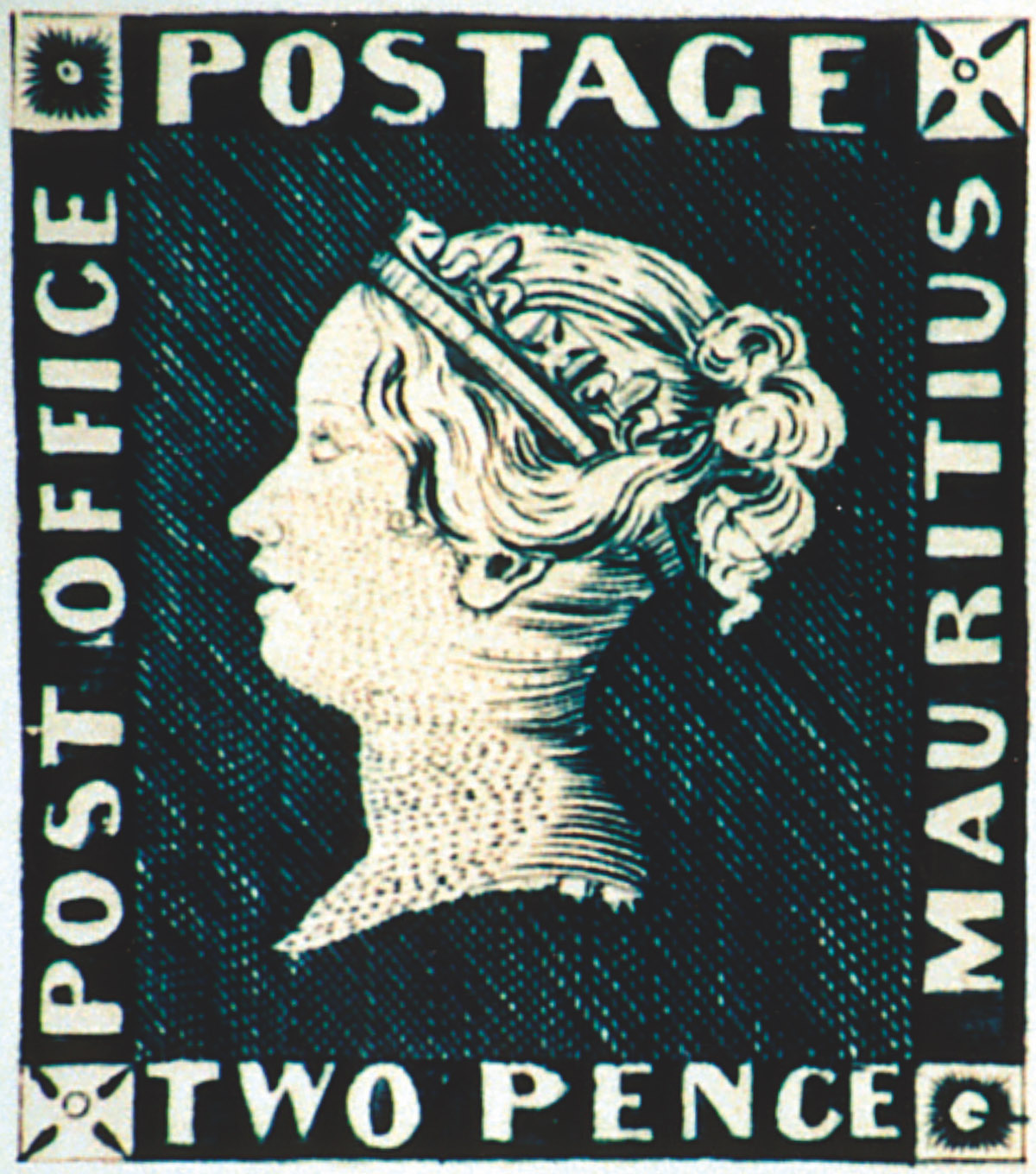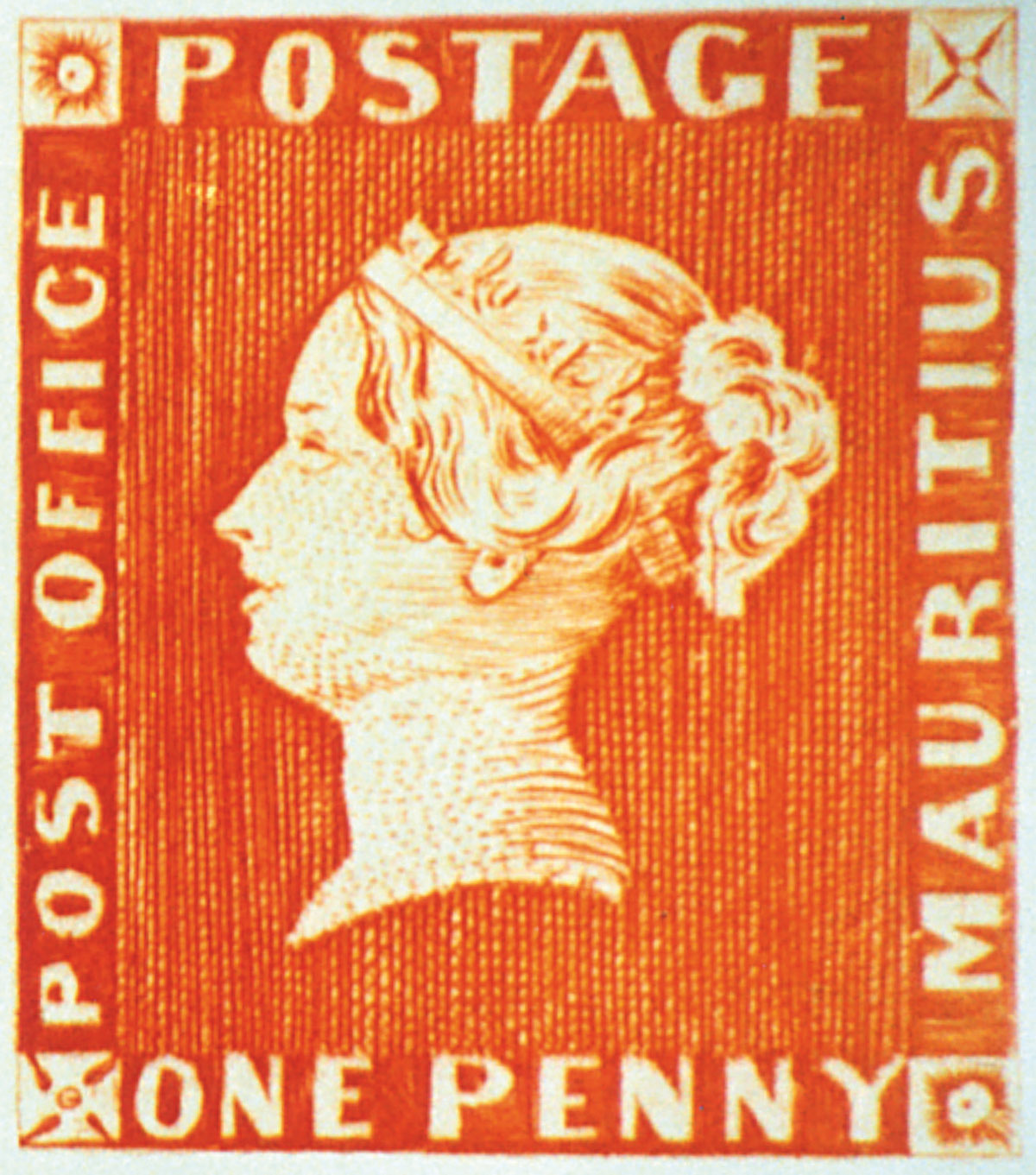Those tiny paper squares that revolutionised the postal service in Britain – and around the world. By Ettie Neil-Gallacher
One of my first memories is of helping my mother with Christmas cards. My father’s role in this endeavour extended to grumpily signing his name after an inordinate amount of nagging and sherry, and the three-year-old me clearly felt that her involvement would lighten my mother’s festive burden. Much to my irritation, rather than being allowed to scrawl a heartfelt seasonal greeting, I was relegated to affixing the stamps; I vividly recall the bitter, viscous taste of the gum, and my enthusiasm for the task soon waned. (Read more on the the best country Christmas cards .)
Given my early aversion, the advent of self-adhesive stamps nearly 30 years ago was welcome, but even I then sensed there was something lacking, that some of the romance was being lost with such a step. And while it’s been some time coming, the Royal Mail’s announcement that our current stamps are to be phased out by January next year in favour of the barcoded variety, made me feel rather sad. The new stamps look like the ones we’re used to, only a barcode runs down the right-hand vertical edge. The customer scans the barcode using the Royal Mail app, and this will provide extra security features to prevent counterfeiting, enable tracking, and other services, including videos and greetings. Royal Mail knew such changes would ruffle feathers, so it has incorporated a fake perforation between the image and the code to appease those concerned about the aesthetics.

Stamping, examining and osrting letters in the inland sorters’ room at the General Post Office, London, 1844
March of progress
I’m no Luddite; the simplification of processes, and the incorporation of new materials that render older ones obsolete, are essential to the relentless march of progress. But stamps have been around for more than 160 years, and were such a critical element of modern communication – the tiny paper signifier that indicated that a letter or a parcel was worth sending and that it had been paid for by the sender – that the encroachment of digitalisation into the rich history of philately seems to be yet another nail in the coffin of our most charming means of contacting each other.
Up until the reign of Queen Victoria, postage was an expensive and rather cumbersome procedure. The sending of letters dates back to King Henry III, and between his reign and that of King Henry VIII, the post was basically the preserve of the monarch. By the turn of the 17th century, however, there were posts in existence from London to Edinburgh, Holyhead, Bristol, Plymouth and Dover; the last of these was by far the most important, due to its trading position with the Continent. Mail was hand stamped or inked. At the start of the Restoration in 1660, Charles II appointed the first Postmaster General, Henry Bishop, to the position. Bishop seems to have been rather a rum old cove: he supported King Charles I during the Civil War, but switched allegiance to Parliament in due course; and he didn’t serve out his full seven-year tenure as Postmaster General due to allegations of corruption, which forced him to surrender the remainder of his lease in 1663. But he left an important legacy in the form of the world’s first postmarks. ‘Bishop marks’ showed the date on which a letter was received by the General Post Office, which meant that the delays, which plagued the post, could be curtailed. The next innovation in the postal service came about in 1680, when a merchant named William Dockwra founded the London Penny Post, which introduced the idea of paying a penny for a letter to be delivered anywhere in London. He also introduced hand stamping to postmark the letters to frank them, which indicated the letter’s provenance. The system was a hit. But the government wasn’t about to miss out on a trick, so it took charge of the operation only two years later and incorporated it into the Post Office. Predictably, prices were raised, and successive governments creamed off the profits, using them to fund the endless wars with France in particular. At this stage, letters were often no more than folded sheets of paper with the address written on the outside – a simple affair that belied the complexity and expense of the postage process. The cost of postage – which was paid by the recipient – was based on distance and the number of sheets of paper used. Such a system was clearly open to abuse. Codes were devised and inscribed on the outside so that the receiver could refuse the letter but ascertain the contents without having to receive it and pay for it in order to read it. Cross-writing or cross-hatching was all the rage, too: once the writer reached the bottom of the page, he would turn the paper 90 degrees, and then continue writing.

An example of cross-writing, which was used to lower postage costs
Lobbying for reform
The General Post Office wasn’t happy about being outsmarted, and various politicians and free-trade advocates began lobbying for reform on the basis that a quick, affordable postage system would be good for both the general public and government revenues. It was a school teacher from Kidderminster who came up with an alternative. Rowland Hill can perhaps be regarded as the founder of the modern postal service. He had two clever ideas. The first was to introduce a uniform rate of postage based on weight rather than distance. And the second was to introduce a postage stamp to indicate the cost of postage had already been covered by the sender. He wrote to the Chancellor, describing his proposed stamp: “… by using a bit of paper just large enough to bear the stamp and covered at the back with a glutinous wash”. It may be apocryphal, but the idea of a stamp first struck Hill when he saw a maid receive a letter. Apparently, she scanned it for the coded message from her lover, and then refused to accept it. Hill realised that postage was punitively expensive, and that the cost was borne by the wrong party. Hill reasoned that if people could send letters cheaply, they would do so in much greater numbers, which would make for a larger profit. Indeed, the initial rate of 4d was such a hit with the general population that in little more than a month it had been cut to 1d, and the Uniform Penny Post was born in 1840.

Rowland Hill introeuced a stamp to indicate the cost of postage had already been covered by the sender
From black to red
Working alongside Henry Cole (the father of the Christmas card), a competition was launched for the design of the stamp. There were more than 2,500 entries, but none met with Hill’s approval; instead he endorsed a simple layout of a picture of Queen Victoria in profile in white against a black background. The Penny Black – the world’s first adhesive stamp – was released on 1 May 1840. At the same time, Hill also came up with the Two Penny Blue stamp, for double-rate letters, which was released shortly afterwards.

Centre-cycles, or ‘hen and chicks’ were trialled by postmen in Horsham in 1882
Despite its fame, the Penny Black was in circulation for a relatively short period of time. Hill had had his reservations about the colour: during postage, a stamp was to be marked with a red cancel so that it couldn’t be used again. The problem was, with such a dark background, the red cancel didn’t show up and it could also be easily removed. “All sorts of tricks are being played by the public who are exercising ingenuity in devising contrivances for removing the obliterating stamps by chemical agents and other means,” lamented Hill. Experiments were conducted during the course of 1840 with different stamp colours. The ‘rainbow trials’ resulted in the launch of the Penny Red in 1841, which remained in use for nearly 40 years.
Hill’s reforms were a triumph: within a year, the number of letters sent more than doubled from 76 million to 168 million, and within 10 years, this figure rose to just shy of 350 million letters. Within a few years, stamps were in use in Switzerland, Brazil and the USA, and by 1860, 90 countries had adopted the postage stamp system.

The iconic red pillar box
Robin redbreast
The Victorian era heralded other firsts for the postage service, too. The first red pillar boxes appeared in Jersey in 1852, and quickly spread across the mainland, and a half-penny post was introduced for postcards in 1870, as were telegraphs. Ten years later, postmen on bicycles appeared on the streets. These postmen were nicknamed ‘robins’ or ‘redbreasts’ because of their red uniforms. The association we have between robins and Christmas arose out of this idea. At the time, Christmas cards often depicted their own delivery, and so artists started illustrating their Christmas cards with images of the bird instead.
While the post continued to develop as it grew in the 20th century, the innovations were perhaps less dramatic. Second-class postage was introduced for a slower service in 1968, and the following year, the General Post Office became a nationalised service rather than a government department. Perhaps the most radical change was the advent of postcodes to simplify the sorting system, which happened in 1974.
The first threat to stamps came in 2006, however, when a service to enable people to pay for the postage online was introduced. And the arrival of email and texting and messaging services drove nails into the coffin of the conventional post. Indeed, the number of letters being sent has declined by nearly half over the course of the past decade, down to 7.8 billion. The modernisation of communication has brought immediacy at the expense of intimacy. But that great innovator Hill, with his appetite for progress and improvement, would almost certainly approve.
The big hitters
Penny Blacks

While the Penny Black is probably the world’s most famous stamp, it’s far from being the most valuable. Some 68 million were printed, and it’s thought that 5% are still in existence. The rarest ones can still command more than £100,000, but there are others that dwarf it in terms of value.
1847 Mauritius Post Office stamps


These may look like standard British stamps of the era, but in fact these were the first British stamps to be produced outside the UK. Twenty-seven examples of One Penny Red and Two Penny Blue are thought to exist, with the ‘Ball cover’ editions, issued for the balls thrown by Lady Gomm, the most valuable. In 2021, a One Penny Red sold for more than €10m.
1856 British Guiana One Cent Magenta
Known as the rarest stamp in the world because only one was ever issued, it was bought by shoe designer Stuart Weitzman in 2014 for $9.5m.
Two Penny Blue
 The second stamp ever made, these are much rarer than the Penny Blacks. One was sold in 1992 for CHF 1.6m.
The second stamp ever made, these are much rarer than the Penny Blacks. One was sold in 1992 for CHF 1.6m.
Edward VII stamps

Jumping forward to the reign of Edward VII, 6d Pale Dull Purple Inland Revenue Official stamps are extremely rare – because an order was given to destroy them on the day they were released. In 2010, one was sold for £400,000.
The Tyrian Plum stamp (above) was released in 1910, but Edward VII died shortly after 24 million of them were printed, and most were destroyed. One of the few that’s still in existence sold at Spink’s for £102,000.





